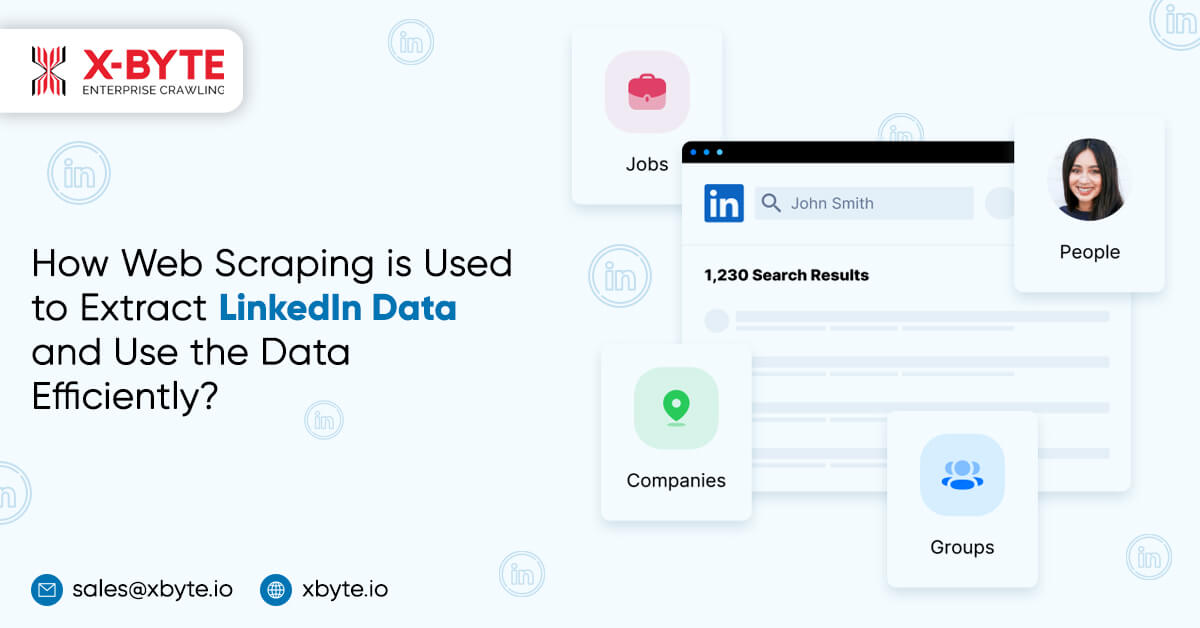
Every day, Internet users create 2.6 quintillion bytes of information. There will be 151 trillion terabytes of data to examine by 2025.
While it’s difficult to imagine how much data there is, it’s clear that there is a lot to be gained by gathering data on the internet. Not to mention the limitless database of potential clients ready to be contacted.
But who has time to go through all that data in order to generate leads? Searching for leads, gathering data, and compiling a realistic list of possible clients by hand is time-consuming and wasteful.
This is when data scraping is useful. In this blog, we’ll explain what data scraping is, how to Scrape Data from LinkedIn (safely and legally), and how it may help you greatly with lead creation.
What is Data Scraping and How Does It Work?
Web scraping, will physically extract the data for you, collecting the data you’re looking for and structuring it in an easy-to-understand way.
Web scraping services automates this process, allowing it to run independently. That is, you can automatically discover the best leads (together with all of their publicly available information) and utilize that knowledge to speed up lead production.
Reasons Behind Scraping LinkedIn Data
The water can become a little bad here. LinkedIn officially opposes data scraping and actively discourages scrapers from using the platform in order to preserve user data and prevent the space from becoming overrun with negative actors.
Scraping public data from the platform is, however, perfectly lawful. Indeed, LinkedIn lost a Supreme Court dispute in 2019 against hiQ Labs, a San Francisco-based firm.
HiQ Labs requested an injunction against LinkedIn because the company barred them from scraping data for research purposes. The 9th US Circuit Court of Appeals sustained the injunction.
They basically said that persons who make data publicly available on a social media site don’t have a reasonable expectation of privacy, and that data scraping didn’t violate anyone’s privacy rights.
This established a precedent that scraping publicly available user data does not violate the platform’s terms of service, and hence will not get you in trouble.
Tools and Methods for LinkedIn Data Scraping
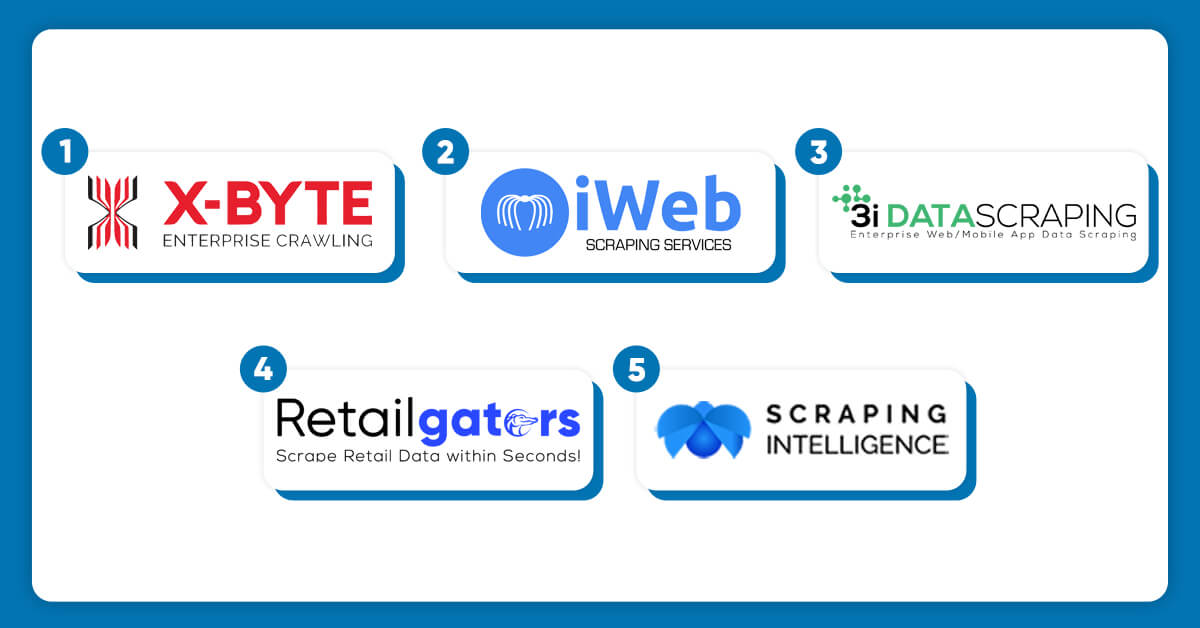
When it comes to scraping LinkedIn, there are a number of programs that may help. The following are the top presently in use:
X-Byte Enterprise Solutions
iWeb Scraping
3i Data Scraping
RetailGators
Scraping Intelligence
Data Extraction from LinkedIn Groups
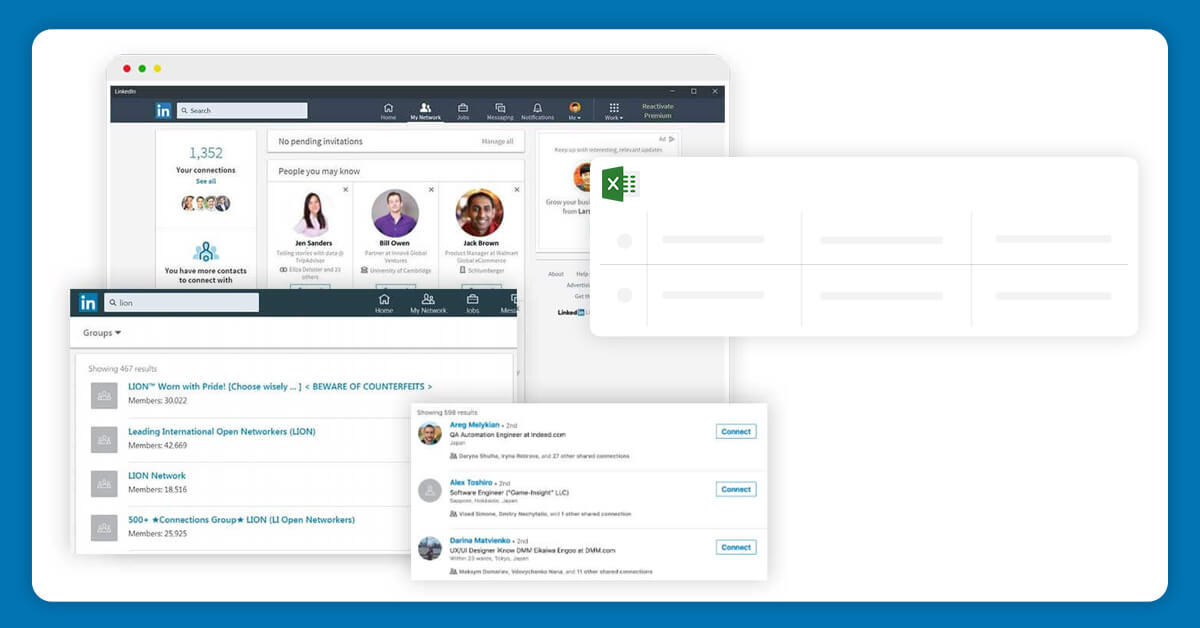
Focusing on data from LinkedIn groups, regardless of which LinkedIn Scraper you employ, is a smart technique.
Any B2B category will have many LinkedIn groups, all of which are full of prospective clients. Creating and keeping a list of leads from this goldmine of information is a simple approach to getting a warm list of clients that are ideal for your product or service.
Not to mention that groups will provide you with significantly more thorough information. You’ll be able to scrap job titles, three top talents, business names, past companies, and the many groups they’re a member of instead of simply a name and email.
All of this additional data can aid you in personalizing your community outreach and establishing genuine interactions with potential consumers right away.
Data Extraction from LinkedIn Profiles
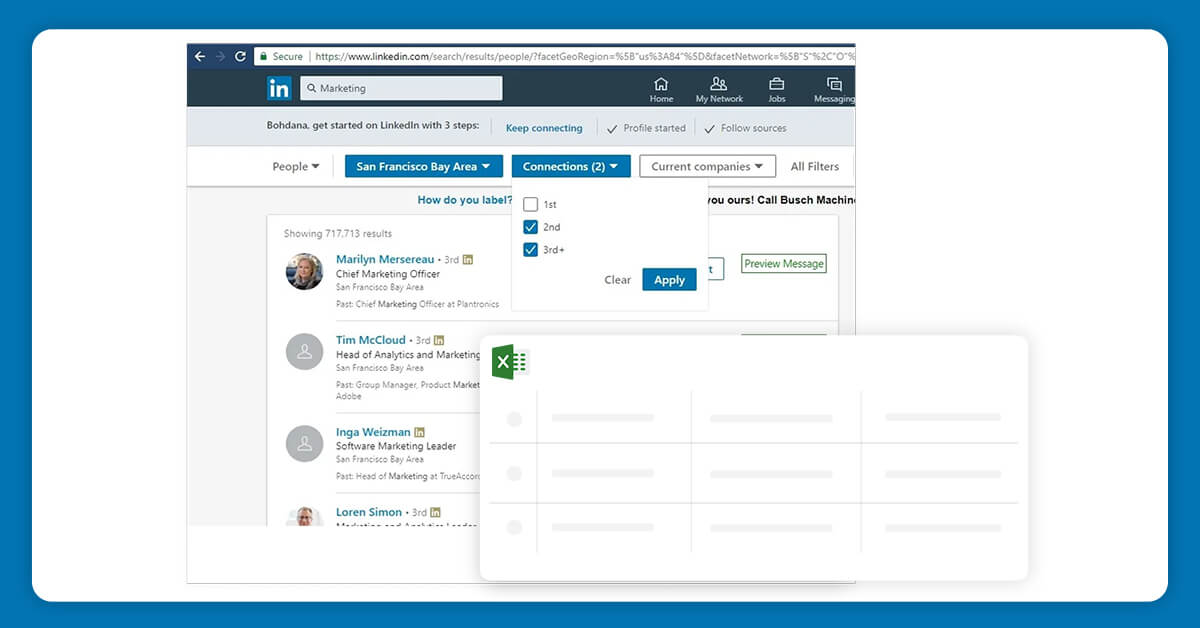
Individuals LinkedIn user profiles, as well as groups, provide valuable information for lead creation.
Any of the Chrome extension tools may automatically scrape names, email addresses, job titles, seniority, skills, and industry – pretty much any information about the individual on their personal or corporate profile whenever you visit a public LinkedIn page.
Lead generation becomes lot faster and more successful if you have that knowledge.
How Scraping LinkedIn Data Can Help You Generate More Leads?
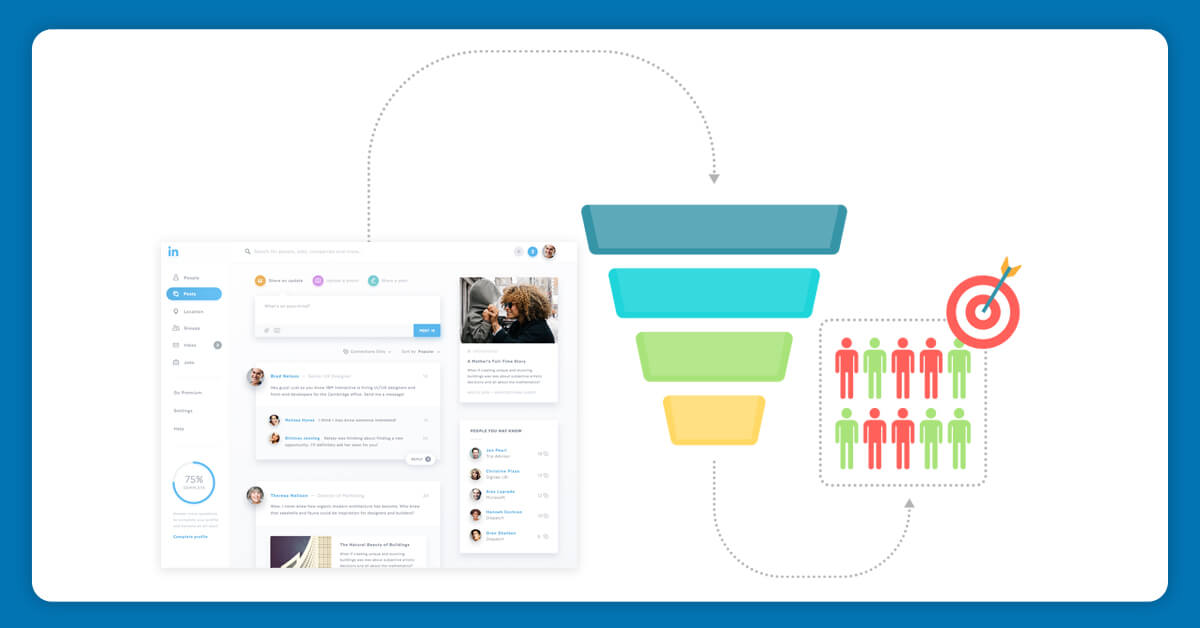
Scraping LinkedIn data is only the beginning of your lead creation strategy. You can utilize this information to construct far more successful outreach efforts once you’ve discovered a solution that works for your firm and started producing a list of potential leads.
You’ll get more in-depth information like job title, talents, accolades, and more through data scraping service than just contact information like name, email address, or phone number.
You may use this demographic information to customize your outreach messages utilizing X-Byte Enterprise Crawling automation tools and outreach campaign software.
Rather than sending out the same generic emails to everyone and receiving few responses, you can automate targeted drip campaigns that bring in a steady supply of warm leads month after month.
The greatest thing is that after you’ve connected your LinkedIn scraper’s list of potential clients, the outreach process is really simple to set up and completely automated.
It automates outreach so you can focus on what matters most: closing business and providing excellent service.
Make the Most of Your Scraped Data
The easiest part is scraping data; once you’ve got it set up, it’ll help you acquire a steady stream of information.
The goal is to put that data to work for you and to take advantage of the insights you obtain. While many B2B organizations merely collect contact information and cold email consumers, the top businesses that develop year after year know how to use this data better.
You can make utilizing your data more accessible with X-Byte Enterprise Crawling, freeing time to focus on more essential things.
